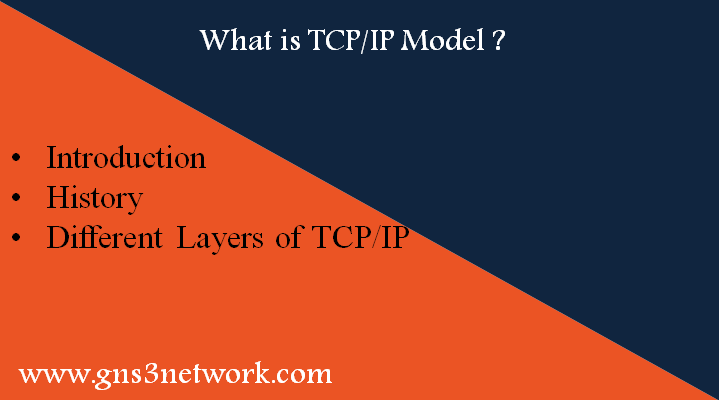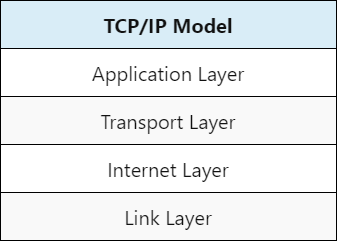In this article, we will discuss the TCP/IP (Transmission Control Protocol / Internet Protocol) Model of computer networking. It is a reference model that is designed to understand large and complex network architecture in a simple layered approach. TCP/IP itself does not have any direct relationship with the network. It defines a networking framework where various networking protocols work in different layers.

History of TCP/IP Model
TCP/IP is a reference model that helps us understand data flow between two computers over a network. The TCP/IP protocols suite is not directly related to the Internet, though, with the help of this, we can understand the working of different network protocols in a layered approach.
In 1975, a two-network communication test was performed. Later, In November 1977, a three-network communication test was performed. Finally, on 1 January 1983, TCP/IP was officially released.
Different Layers of TCP/IP Model
TCP/IP has 4 layers,i.e., the Application Layer, Transport Layer, Internet Layer, and Link Layer. As in the OSI model, different types of protocols are working on different layers. Although, according to Kurose and Forouzan TCP/IP have 5 different layers. Now, we will discuss all layers of TCP/IP one by one.

Application Layer of TCP/IP Model
The Application Layer is Layer 4th and the top layer of the TCP/IP model. In this layer, different application layer protocols are working. These protocols first encapsulate their headers with application data. After the encapsulation, various operations like encryption, decryption, compression, etc. are performed on this layer.
Once all of the operations on data are performed, we will send the re-structured data to Transport Layer.
Transport Layer
The transport layer is layer 3 of the TCP/IP model. Like in the OSI Model, the transport layer has two significant protocols i.e. TCP and UDP. Error checking and correction, both tasks are performed on this layer.
The Transmission Control Protocol is a reliable protocol that gives a guarantee of delivery of data. TCP is a connection-oriented protocol, that first establishes a reliable connection using a Three-Way Handshake. Due to the overload of reliable messages, TCP is a little bit slow in comparison to UDP Protocol. Whereas, UDP is a connectionless protocol, which does not use any messages for data reliability. It is a fast protocol in comparison to TCP.
The transport layer divides the re-structured application layer data into multiple chunks. After this, Transport Layer protocols (i.e. TCP or UDP), encapsulate their header on this data to form a segment.
Internet Layer
The Internet Layer is 3rd layer of the TCP/IP model. This layer works the same as the Network layer in the OSI Model. As the name suggests, many network protocols work on this layer. Internet Protocol (IP) is one of the network-layer protocols. Here, both versions of the IP protocol work i.e., IPv4 and IPv6. The Internet layer receives the data segment from the transport layer. Either IPv4 or IPv6 encapsulates their header on each segment and sends it to the first layer of the TCP/IP model, i.e., the Link Layer (described below).
Link Layer
Link-layer is the 1slayer of the TCP/IP model. This layer is a combination of both the Data Link layer and the Physical layer of the OSI Model. The Link Layer performs all the work which Data-link and physical layer in the OSI Model do. This layer receives a data packet from the Internet Layer and then encapsulates a layer 2 header (Ethernet by ARPA protocol or IEEE 802.11). After this encapsulation, the Link Layer transmits this data frame to another computer over a communication medium.
References
Related Articles
- OSI Model – 7 Layers Explained in detail
- What is the difference between TCP/IP and OSI models
- TCP | Transmission Control Protocol – Explained in detail
- Difference between TCP and UDP
- UDP | User Datagram protocol – Explained in detail
Summary
TCP/IP is a reference model, that helps to understand the data flow in computer networking. The layers of the TCP/IP Model are Application, Transport, Internet, and Link. Different protocols work on different layers. It is beneficial in understanding data packet flow over a network.
Did you find this article helpful? Please share it on social media platforms and show us some love 🙂